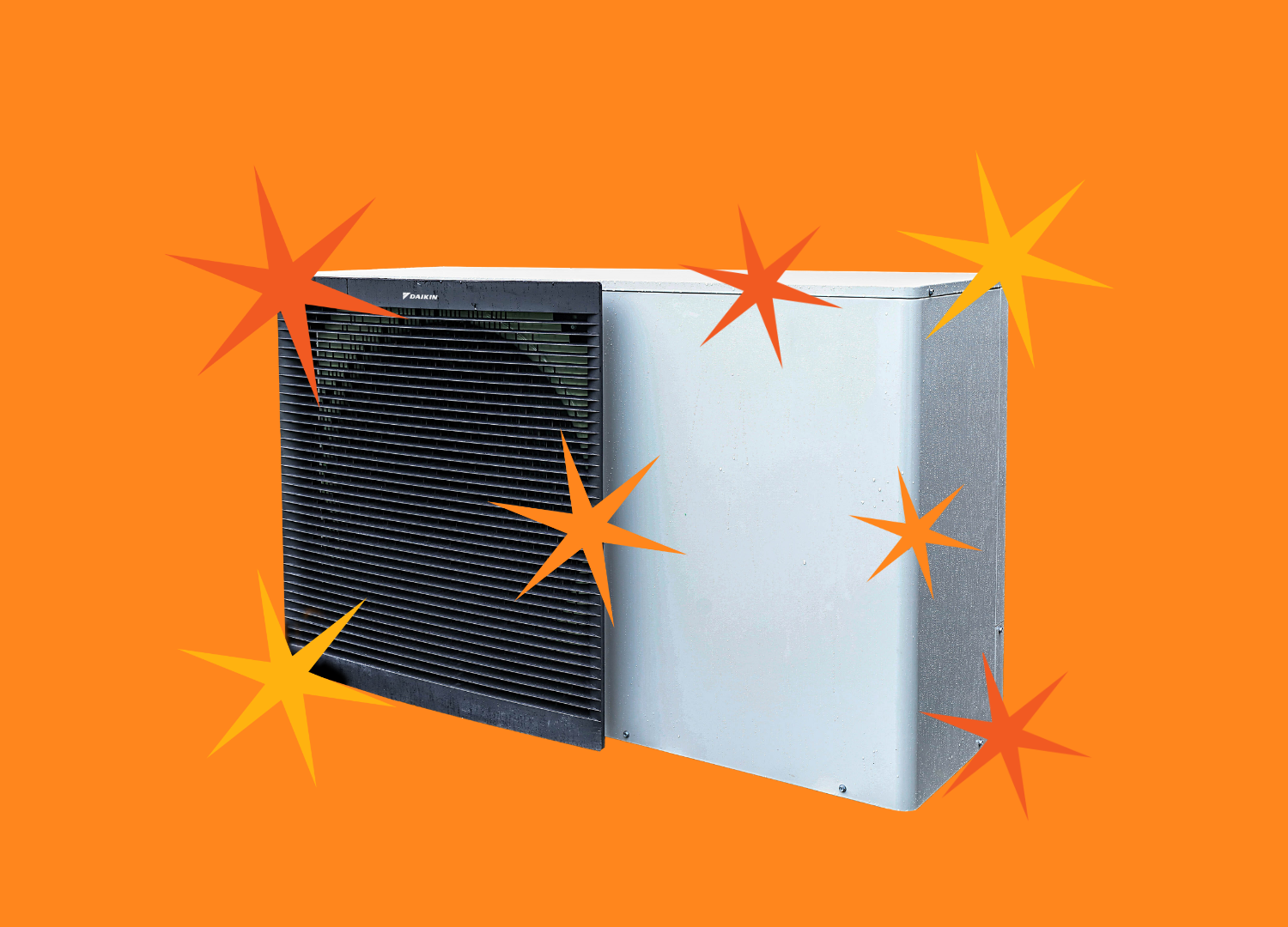
Why our Zero Carbon Homes Director has made the move to low-carbon living
EDF remains steadfast in its commitment to advancing low-carbon heating solutions, a crucial component of our mission to help Britain achieve Net Zero. Join us in an interview with Dan Hopcroft, EDF's Zero Carbon Homes Director. Gain valuable insights into EDF's objectives, discover practical tips on how to lower your energy usage and learn how Dan's made his home more low carbon.
What have you done to improve your home’s energy efficiency/achieve a low-carbon home?
When I moved into my 1930s home, I first took a look at the insulation, and there was already cavity wall insulation. I decided to add extra insulation to the loft and began insulating the floors. While statistics show that most heat loss occurs through the loft and walls, I personally felt that my floors contributed significantly to the cold. So, I started insulating the floors last year, and it's made a remarkable difference in maintaining warmth.
I also had a bivalent heat pump installed last year, which performed really well throughout the winter. A bivalent heat pump is a hybrid system that works in tandem with a boiler. I opted for this setup to better understand what's most beneficial for customers. These changes have reduced my carbon footprint and contributed to a more energy-efficient and environmentally friendly home.
Has installing a heat pump in your home made a difference?
Absolutely. It's reduced my carbon footprint while keeping my home comfortably warm. The heat pump handles my hot water needs whilst consistently heating it to the desired temperature. It maintains a comfortable indoor temperature even when the temperature drops to around 7°C. The best part? I didn't need to replace my radiators; they work seamlessly with the heat pump.
Is there anything that surprised you about your heat pump?
One notable feature of the heat pump is how quiet it is. Friends and family have commented saying it's "much quieter than I expected." In fact, it's so quiet that you might not even realise it's running, as other background sounds can easily mask it.

Some people may be put off by heat pumps because the surface temperature of their radiators may feel different, is this something that you noticed?
I did notice a difference in the surface temperature of my radiators after installing the heat pump, but it's important to understand why this happens.
With traditional boilers, the water in the radiators is extremely hot as people often set their boiler temperature to high temperatures of 70-80°C. So, people are used to touching radiators that can feel scalding to the touch. In contrast, a heat pump warms the water to a lower temperature, typically around 40-50°C. What you need to adapt to with a heat pump is that it heats the air more gradually, which is actually more efficient compared to a boiler. As long as the radiator's temperature is higher than the room's temperature, it will still effectively warm the room. It may feel different at first, but it's a more energy-efficient way of maintaining a comfortable indoor environment.
During the current cost of living crisis, what steps can customers take to make their homes more low carbon?
In the current high cost of living situation, there are a few steps customers can take to make their homes more environmentally friendly:
- Improve insulation: One of the most significant steps is ensuring your home is well-insulated. Check your loft insulation. Consider cavity wall insulation for suitable walls or external wall insulation for others. This simple step can significantly enhance your property's energy efficiency.
- Optimise boiler settings: If you have a condensing boiler, adjusting its temperature settings can boost efficiency. This is because when you turn your boiler down, you allow the condensing part of the boiler to work, which is where the efficiency comes from. This won't work if the temperature of the water returning to the boiler is too high. Lowering the flow temperature for your radiators from 70-80°C to 60°C or lower can reduce gas consumption, costs, and emissions by 6-8%. Adjust the setting based on weather conditions, but avoid leaving it at the same high setting when it's not needed.
- Adjustment your thermostat: Another straightforward change is turning down your thermostat by just 1°C. This minor adjustment can lead to energy savings over time.
By following these steps, you can reduce energy usage in your home, lower your carbon footprint, and potentially save on your energy bills during these challenging economic times
Why is installing a smart meter important to achieving a low-carbon home?
It's not just about having a smart meter; it's about what you do with the information it provides.
Here's the beauty of it: smart meters come at no cost to you, much like adjusting your boiler settings. Turning down your boiler doesn't cost more, but it boosts efficiency. When you combine the benefits of adjusting your boiler settings and having a smart meter, you're not spending a penny, yet you gain the power to make smarter choices. My personal experience with a smart meter revealed how much energy I used during the winter, prompting me to rethink heating unused rooms. Smart meters offer the information needed to take meaningful action and reduce energy consumption. In short, a smart meter provides the data you need to make positive changes in your quest for a low-carbon home.
It's also worth pointing out that installing a smart meter will also allow you to access time-of-use tariffs in the future, which can also help you save cash and carbon.
Why do customers need to make these changes?
When you waste energy, it leads to the construction of more power stations and renewable infrastructure, which involves manufacturing with a carbon footprint. By conserving energy, we reduce the need for these additional resources and minimise our impact on the planet. In essence, it's the right choice for both the environment and efficiency.
What is the motivation behind EDF’s investment in low-carbon heating solutions?
Well, we're putting a lot of effort and money into low-carbon solutions because we want to help our customers use less energy. You might be wondering why a big energy company like us would want people to use less energy. The reason is simple: we want to reduce our reliance on fossil fuels, like gas and non-renewable electricity, because they harm our planet. It's not about how much energy you use; it's about the type of energy you use. EDF primarily produces low-carbon electricity through nuclear generation. So, investing in low-carbon solutions fits perfectly with what we do. Our ultimate goal is to make sure that everyone's energy choices don't harm the environment.
EDF at its core is a nuclear generator, a low-carbon electricity generator and therefore investing in low-carbon is entirely consistent with our ethos. The decarbonisation of people's domestic energy consumption is consistent with what EDF does on the generation side.
Can you tell us more about EDF’s investment in CB Heating and their Heat Pump Installer Network (HPIN) network?
Our decision to invest in CB Heating was driven by our early exploration of EDF's role in the heat pump sector. We spotted an opportunity to fast-track our plans, and CB Heating possessed the qualities we were seeking. They boasted amazing Trustpilot reviews, a strong management team, and ethical values that mirrored our own. It was a seamless match.
CB Heating became our vehicle to expedite various initiatives, including the establishment of the Heat Pump Installer Network. Achieving nationwide coverage can be a tricky task, but this network provides us with the means to extend our reach without incurring substantial costs. It's a win-win scenario, as it also offers business opportunities to local professionals. Often, the installer and surveyor are the same person, ensuring a familiar face for customers. This approach not only benefits our expansion plans but also supports local employment, a key part of our commitment to communities.
Why EDF?
EDF stands out for several reasons. First and foremost, our company's ethical values drive everything we do. We are committed to conducting business in the right way and have a genuine passion for decarbonising energy to benefit our customers. Treating customers with the respect and fairness we would want is deeply ingrained in our company's DNA.
When it comes to heat pumps, EDF offers a wide range of solutions through our partnership with CB Heating. Unlike many companies, we provide options not only for low-temperature heat pumps but also high-temperature variants that can function more like traditional gas boilers. This flexibility allows us to address various property challenges, such as different radiator sizes, pipe configurations, or insulation issues, including homes with solid walls. We also offer hybrid solutions, which retain a gas boiler alongside a heat pump. While we don't see hybrids as a long-term solution, they serve as an essential transitional step, much like the evolution of hybrid cars. It's a crucial phase that helps customers prepare for a complete switch to sustainable heating solutions. In essence, EDF offers a holistic approach to meet your heating needs while aligning with our commitment to a greener, more sustainable future.

Related articles

Get shifty and reduce your carbon footprint

How to choose the best energy tariffs
